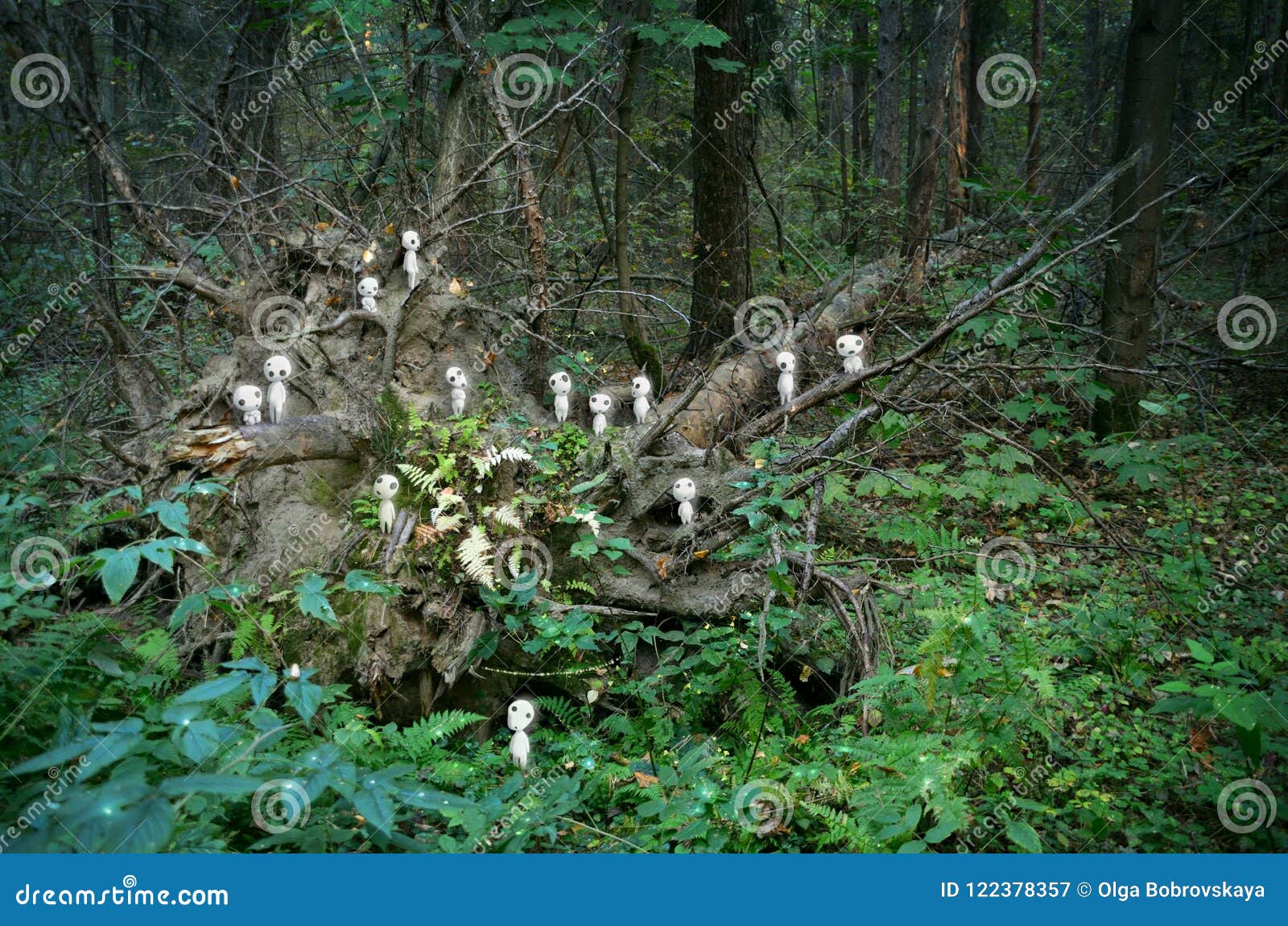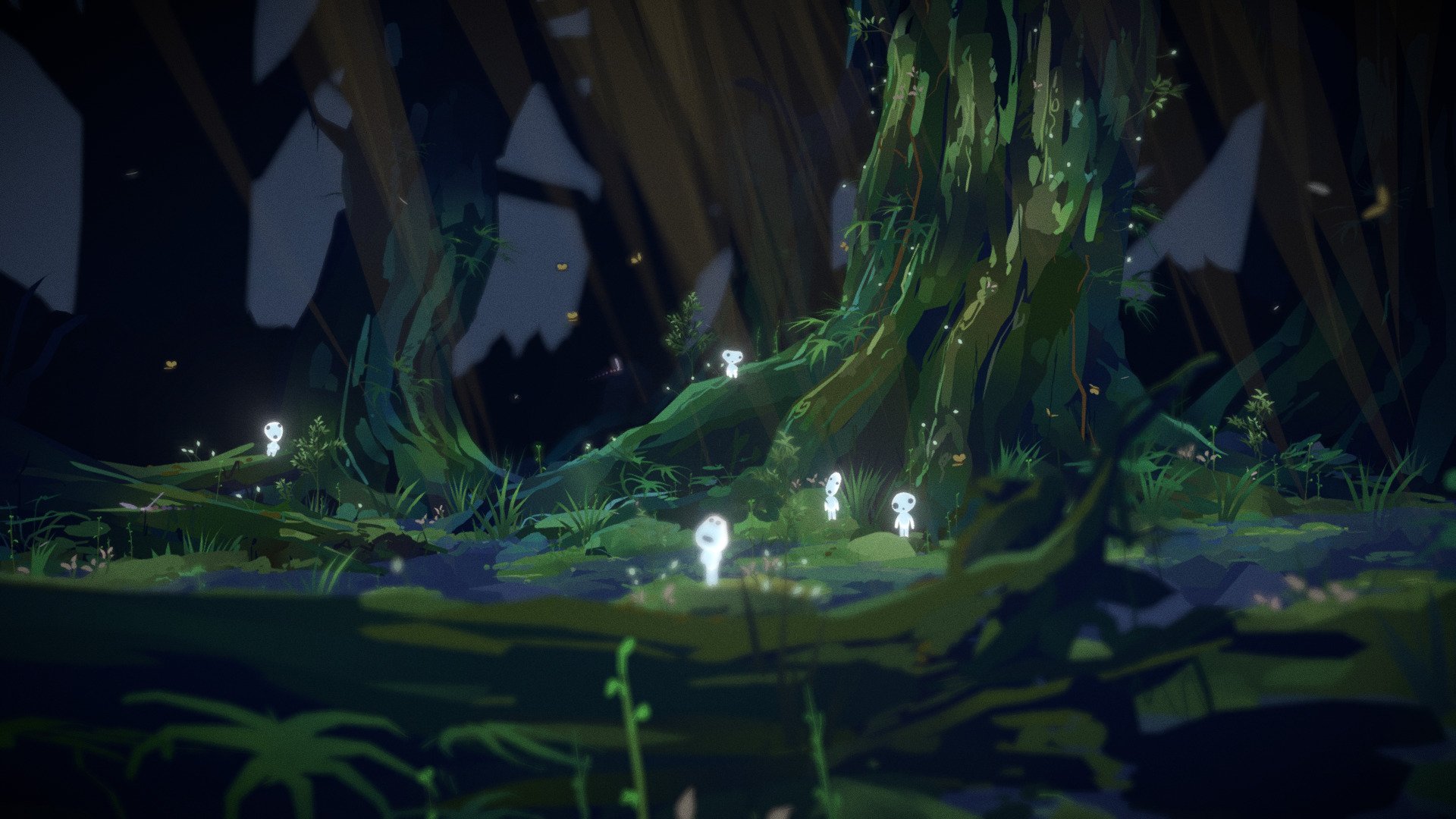Unveiling The Forest Spirit Kodama: A Journey Into Mythology And Nature
Have you ever wondered what that eerie rustling sound in the forest means? Is it just the wind or could it be the forest spirit Kodama? Welcome to the mystical world of Kodama, where ancient myths meet the modern fascination with nature spirits. In this article, we'll dive deep into the legend of the Kodama, uncovering its origins, significance, and cultural impact. Whether you're a mythology enthusiast or just someone curious about the mysteries of the forest, this story is bound to leave you spellbound.
Picture this: you're walking through a dense forest, the sunlight filtering through the trees, and suddenly, you hear whispers. You pause, look around, and there it is – a small glowing figure darting between the trees. That, my friend, is the Kodama, a forest spirit from Japanese folklore. But what exactly is a Kodama? Let's explore the enchanting tale behind this mystical creature.
Throughout history, forests have been revered as sacred places, home to spirits and gods. The Kodama is one such spirit, believed to inhabit trees and forests. This article will take you on a journey through the myths, traditions, and modern interpretations of the Kodama. So, grab a cup of tea, settle in, and let's uncover the secrets of the forest spirit Kodama.
- Siva Wife The Untold Story Behind The Woman Who Stole Our Hearts
- Tom Cruise Worth 2024 The Untold Story Of A Hollywood Legendrsquos Net Worth
What is a Kodama?
A Kodama, often referred to as a forest spirit or tree spirit, is a mythical being from Japanese folklore. These spirits are believed to reside in trees, acting as guardians of the forest. They are said to bring balance and harmony to the natural world, ensuring the health and vitality of the trees they inhabit. But what makes a Kodama so special? Let's break it down.
- Kodama are invisible to the naked eye, only visible to those with a pure heart.
- They are associated with the life force of trees and are believed to bring good fortune to those who respect nature.
- In some stories, Kodama can take on human-like forms, appearing as small glowing figures or even as talking trees.
Origins of the Kodama Myth
The legend of the Kodama dates back centuries, rooted in Shinto beliefs and Japanese animism. In Shinto, it is believed that everything in nature, from mountains to rivers, has a spirit or kami. Trees, being an integral part of the natural world, are no exception. The Kodama is seen as the spirit of the tree, embodying its essence and vitality.
Shinto Influence on Kodama Mythology
Shinto, the indigenous religion of Japan, places great emphasis on the worship of nature and its spirits. Trees, in particular, are considered sacred and are often marked with shimenawa, sacred ropes that signify their divine presence. The Kodama myth is deeply intertwined with these beliefs, reflecting the Japanese reverence for nature and its spiritual dimensions.
- Keith Craft Age The Man Behind The Lens And Beyond
- Truepeoplesearch Free The Ultimate Guide To Finding People Online
The Role of Kodama in Japanese Culture
In Japanese culture, the Kodama is more than just a mythological creature; it is a symbol of the deep connection between humans and nature. This spirit serves as a reminder of the importance of respecting and preserving the environment. Over the years, the Kodama has found its way into various forms of media, from literature to film, further cementing its place in popular culture.
Kodama in Modern Media
One of the most famous depictions of the Kodama is in Hayao Miyazaki's animated film "Princess Mononoke." In the movie, Kodama are portrayed as small, white, humanoid figures that inhabit the forest. Their presence signifies the health and vitality of the forest, and their disappearance serves as a warning of environmental destruction. This portrayal has introduced the Kodama to a global audience, sparking interest in Japanese folklore and mythology.
Beliefs and Traditions Surrounding Kodama
For centuries, the Japanese people have held various beliefs and traditions regarding the Kodama. These practices reflect the deep respect and reverence they have for nature and its spirits. Here are some of the most notable traditions associated with the Kodama.
- It is considered bad luck to cut down a tree inhabited by a Kodama. Doing so is believed to bring misfortune to the person responsible.
- Some villages hold annual festivals to honor the Kodama, offering prayers and sacrifices to ensure the continued prosperity of their forests.
- Woodcutters often leave offerings at the base of trees before cutting them down, as a way of appeasing the Kodama and seeking their forgiveness.
The Spiritual Significance of Kodama
The Kodama holds a significant place in the spiritual beliefs of the Japanese people. It represents the interconnectedness of all living things and serves as a reminder of the importance of living in harmony with nature. The presence of a Kodama in a forest is seen as a sign of its health and vitality, while its absence is a warning of impending ecological disaster.
Kodama and the Concept of Animism
Animism, the belief that all things possess a spirit or soul, is central to the Kodama myth. This concept is not unique to Japan; it is found in many cultures around the world. The Kodama embodies the animistic view that nature is alive and sentient, deserving of respect and protection. This belief has influenced many aspects of Japanese culture, from art to philosophy.
Scientific Perspectives on Kodama
While the Kodama is a mythical creature, its existence has inspired scientific research into the relationship between humans and nature. Studies have shown that forests play a crucial role in maintaining the balance of the ecosystem, providing habitat for countless species and regulating the climate. The concept of the Kodama serves as a metaphor for the importance of preserving these vital ecosystems.
Ecological Implications of the Kodama Myth
The Kodama myth highlights the ecological significance of forests and the need for their conservation. By personifying the forest as a living entity, the myth encourages people to view nature not as a resource to be exploited but as a living being deserving of respect and care. This perspective aligns with modern environmental movements, emphasizing the importance of sustainable practices and conservation efforts.
How to Connect with the Kodama
If you're interested in experiencing the magic of the Kodama, there are several ways to connect with these mystical spirits. Here are some tips for fostering a deeper connection with the natural world and the spirits that inhabit it.
- Spend time in nature, immersing yourself in the beauty and serenity of the forest.
- Practice mindfulness and meditation, allowing yourself to be present in the moment and attuned to the energies around you.
- Respect the environment, treating all living things with kindness and compassion.
Modern Interpretations of the Kodama
In recent years, the Kodama has become a symbol of environmental activism, inspiring people around the world to take action to protect our planet. Artists, writers, and filmmakers have drawn inspiration from the Kodama myth, creating works that highlight the importance of preserving nature. This renewed interest in the Kodama reflects a growing awareness of the ecological challenges facing our world today.
Kodama in Contemporary Art
Contemporary artists have embraced the Kodama as a source of inspiration, using it as a motif in their work. From paintings to sculptures, the Kodama is depicted in various forms, capturing the essence of the forest spirit and its connection to nature. These artworks serve as a reminder of the beauty and fragility of the natural world, urging viewers to take action to protect it.
Conclusion: Embracing the Spirit of the Forest
In conclusion, the Kodama is more than just a mythical creature; it is a symbol of the deep connection between humans and nature. Through its rich mythology and cultural significance, the Kodama reminds us of the importance of respecting and preserving the environment. Whether you're exploring the ancient forests of Japan or simply taking a walk in your local park, remember to appreciate the beauty and magic of the natural world around you.
So, the next time you hear whispers in the forest, take a moment to pause and reflect. It might just be the Kodama, inviting you to join in the dance of life. Share your thoughts and experiences in the comments below, and don't forget to check out our other articles on mythology and nature. Together, let's celebrate the wonders of the world and the spirits that inhabit it.
Table of Contents
- What is a Kodama?
- Origins of the Kodama Myth
- Shinto Influence on Kodama Mythology
- The Role of Kodama in Japanese Culture
- Kodama in Modern Media
- Beliefs and Traditions Surrounding Kodama
- The Spiritual Significance of Kodama
- Kodama and the Concept of Animism
- Scientific Perspectives on Kodama
- Ecological Implications of the Kodama Myth
- How to Connect with the Kodama
- Modern Interpretations of the Kodama
- Kodama in Contemporary Art
- Conclusion



Detail Author:
- Name : Scot Ferry
- Username : katarina.gottlieb
- Email : ashtyn82@hotmail.com
- Birthdate : 2002-03-29
- Address : 474 Lavon Ports Apt. 400 West Germanfort, VA 37793
- Phone : 1-415-316-5925
- Company : Windler, Bosco and Donnelly
- Job : Product Promoter
- Bio : Officia minima tempore placeat voluptatem ad. Est omnis dolorem repellendus voluptatem. Dolore reprehenderit omnis eos nemo et veritatis.
Socials
tiktok:
- url : https://tiktok.com/@stroman1996
- username : stroman1996
- bio : Enim dolores ipsum officia eligendi.
- followers : 329
- following : 277
instagram:
- url : https://instagram.com/guido_dev
- username : guido_dev
- bio : Dolore dolor recusandae aut. Quis necessitatibus nobis perferendis quas voluptatem distinctio.
- followers : 277
- following : 2805
linkedin:
- url : https://linkedin.com/in/stroman1978
- username : stroman1978
- bio : Dolorem distinctio qui sunt.
- followers : 4914
- following : 505
twitter:
- url : https://twitter.com/stroman1996
- username : stroman1996
- bio : Delectus aliquam a nemo exercitationem ducimus voluptatem esse. Nostrum sed et est quas et. Eaque vero incidunt qui nulla error.
- followers : 2203
- following : 1727
facebook:
- url : https://facebook.com/guidostroman
- username : guidostroman
- bio : Porro sint nulla voluptate nihil.
- followers : 4209
- following : 2500